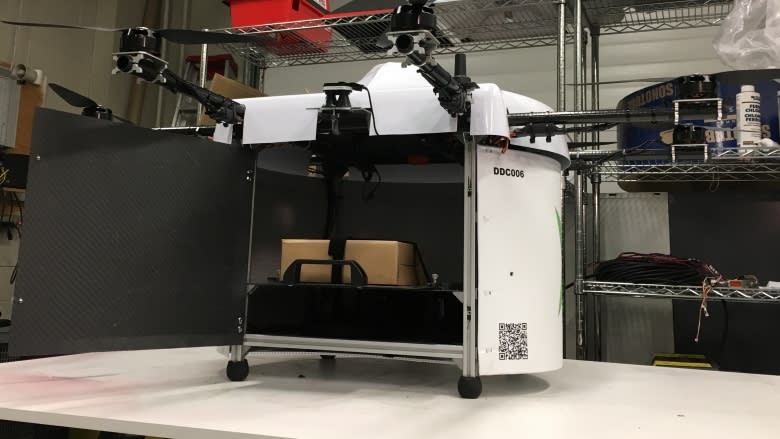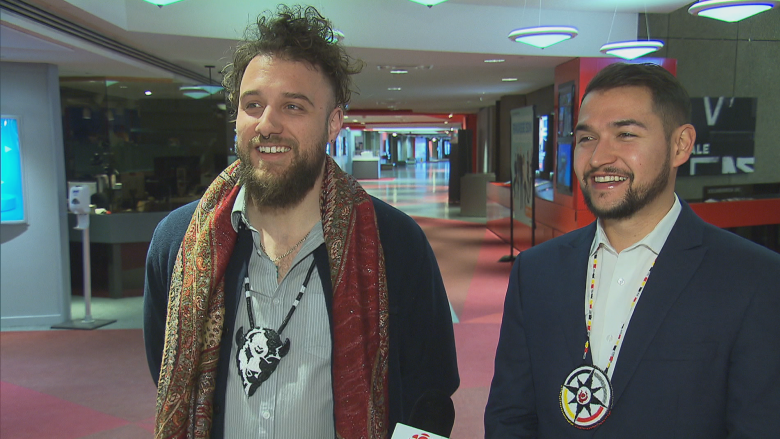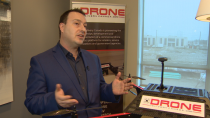Pilot project could see drones deliver much-needed items to northern Ontario First Nations
A Toronto-based company wants to use its drones to deliver items to more than 40 First Nations communities in northern Ontario, many of which aren't easily accessible by road and can only be reached by plane or helicopter.
The pilot project by Drone Delivery Canada could soon be taking flight after more testing and trials, and, of course, the green light from Transport Canada. The company plans to dispatch drones out of a control centre near Thunder Bay, with more coming online over the years.
Each drone is built in-house from lightweight carbon fibre and can carry up to 4.5 kilograms.
"It's a cost-effective, just-in-time delivery mechanism, and we think that's the right place to start," says CEO Tony Di Benedetto, who launched the company in 2014. "They've been neglected for far too long, right here in Canada's backyard."
Faster and cheaper
In these remote communities, a carton of orange juice can cost up to $30, and it can take days, even weeks, to get medical supplies, says deputy grand chief Jason Smallboy, of the Nishnawbe Aski Nation.
That's why Smallboy says he's excited by this new partnership.
"If we can get a drone in to deliver some of the necessary medical supplies that would be needed, we could actually save lives," Smallboy said.
Drone Delivery Canada's initiative would also create jobs for community members.
"Our goal really is to focus ourselves in these First Nations communities ... train the youth, add some curriculum to the school system with regards to drones, employ them," Di Benedetto adds.
The startup teamed up with the Pontiac Group, an Indigenous economic development organization, which will be the liaison with the First Nations communities during the pilot project.
'Human capital building is critical'
"Remote communities are often only offered employment opportunities in the resource sector, mainly mining," says Pontiac's Jonathon Araujo, himself a member of the Wikwemikong First Nation.
His business partner Jacob Taylor adds that it's not enough to invest in infrastructure.
"Human capital building is critical moving forward into the future as technology is rapidly advancing. This is something in remote communities First Peoples can have involvement in," he says.
In the next few months, the company will be testing its drone software to obtain the required licenses from Transport Canada. It hopes to launch its fleet in northern Ontario early next year.
Di Benedetto still thinks Canada is many years away from seeing drones flying in downtown cores delivering packages, but he already has his mind set on the urban (and suburban) market.
"You need to start somewhere, prove the technology and then over time, we will get there."










